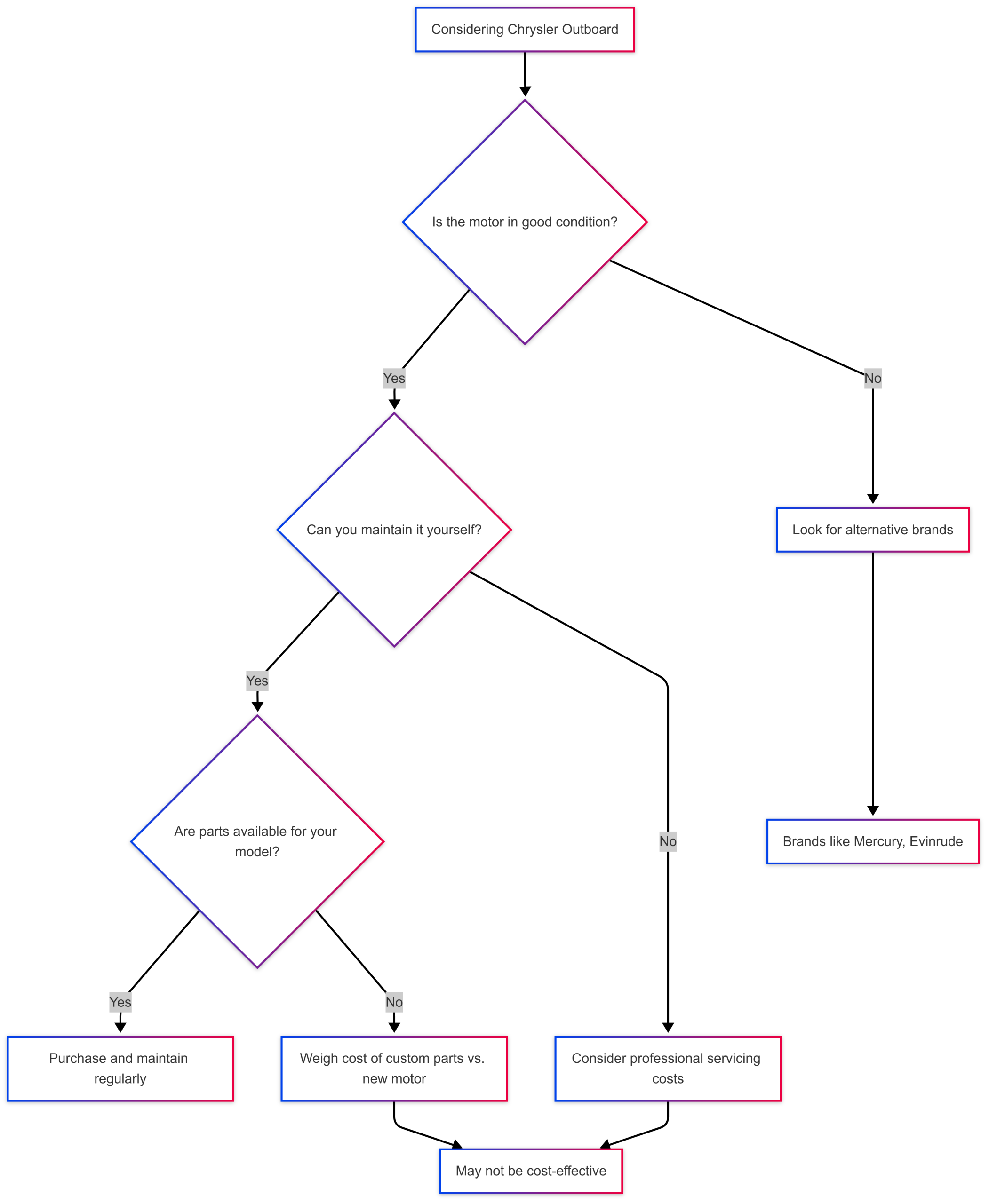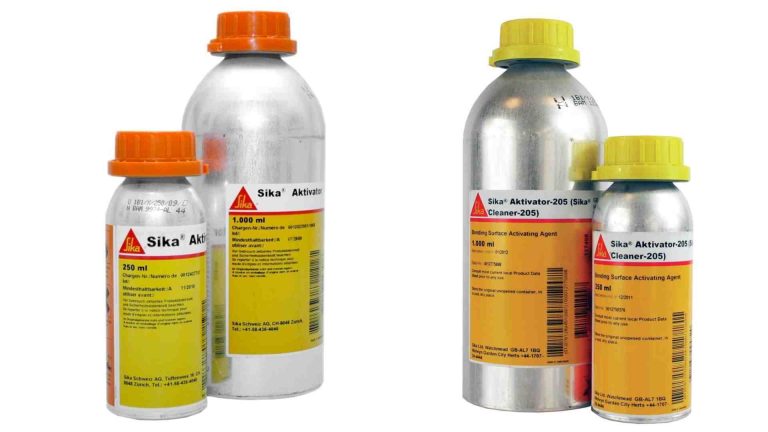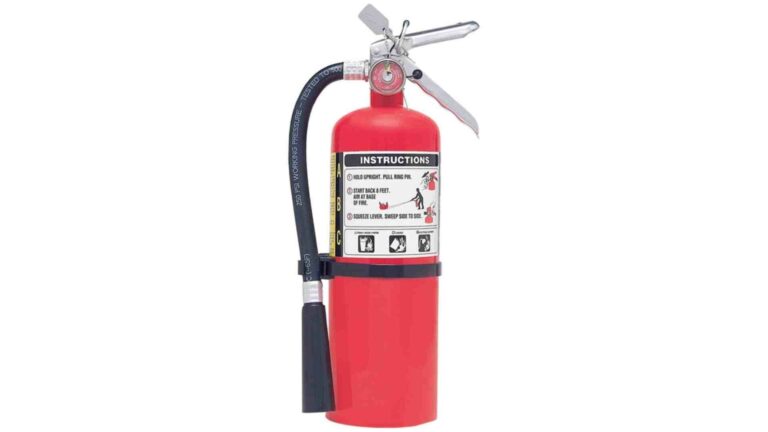Are Chrysler Outboards Good Quality?
Chrysler outboard motors, once a notable presence in the marine industry, are often discussed among boaters considering affordable, vintage options for powering their vessels. With a history rooted in Chrysler Corporation’s foray into the marine market, these outboards have garnered a mixed reputation. Some praise their simplicity and durability, while others point to challenges like parts availability and maintenance. This article dives deep into the quality, performance, and practicality of Chrysler outboards, addressing concerns raised by boaters, such as those observed being towed on a lake, and provides a thorough evaluation for anyone considering a purchase. We’ll explore their history, design, performance, maintenance, and current market considerations, supported by specifications, user experiences, and expert insights.
History of Chrysler Outboards
Chrysler entered the marine market in the mid-1960s by acquiring the West Bend outboard motor company, a move that allowed the automotive giant to leverage its engineering expertise in a new sector. The West Bend motors were rebranded as Chrysler outboards, and the company expanded its offerings to include a range of boats, from runabouts to sailboats, under the Chrysler Boats division. By the 1970s, Chrysler outboards powered various vessels, including their own line of boats like the Chrysler 22 and 26 sailboats and performance models like the Conqueror.
The outboard lineup ranged from small 5 hp models to larger 115 hp units, catering to both recreational and light commercial boating needs. Chrysler’s marine division aimed to offer affordable, reliable motors for the average boater, positioning them as entry-level options compared to established brands like Mercury, Evinrude, and Johnson. However, financial difficulties and a U.S. government bailout in 1979 forced Chrysler to divest its non-automotive businesses. The outboard division was sold in 1984 to U.S. Marine, which rebranded the motors as Force outboards. Production of Chrysler-branded outboards ceased, and the molds and assets changed hands multiple times, eventually fading from the market.
This history shapes the perception of Chrysler outboards today. Their relatively short production run (1960s to early 1980s) and the subsequent discontinuation mean that these motors are now vintage, with implications for parts availability and maintenance. Understanding this context is crucial for evaluating their quality and suitability for modern boating needs.
Design and Construction Quality
Chrysler outboards were designed with simplicity and affordability in mind, targeting the budget-conscious boater. Unlike high-performance competitors, Chrysler focused on producing straightforward, reliable motors that could handle basic boating tasks, such as powering small runabouts, fishing boats, and trailerable sailboats like the Chrysler 22.
Key Design Features
- Engine Design: Chrysler outboards were primarily two-stroke engines, a common technology for outboards during their era. They featured carbureted systems, which are less fuel-efficient than modern fuel-injected engines but easier to repair for mechanically inclined owners. Models ranged from 5 hp to 115 hp, with popular sizes including 6 hp, 9.9 hp, and 55 hp.
- Construction Materials: The motors used durable materials like aluminum for the engine block and lower units, with forged steel crankshafts in larger models like the marine 440 inboards (used in some Chrysler boats). Owners report that the blocks, particularly in larger engines, had high nickel content, enhancing durability.
- Simplicity: The design prioritized ease of maintenance over cutting-edge technology. For example, ignition systems used points and carburetors were standard, making them accessible for DIY repairs but less efficient than modern systems.
- Transom Mounting: Outboards were designed for transom mounting, with long-shaft options for sailboats and short-shaft versions for smaller craft. A sealed tank compartment, as noted in Chrysler 22 sailboat reviews, was a practical feature for fuel storage and safety.
Build Quality
User feedback from boating forums, such as those on iboats.com, highlights a consensus that Chrysler outboards were built to be functional and robust for their price point. Owners describe them as “simple” and “reliable” when properly maintained, comparing them to a manual can opener that lasts indefinitely with care. The motors were not cutting-edge but met the basic definition of quality: they did what they were designed to do—power boats affordably.
However, some owners noted limitations in construction:
- Hollow Rudderstocks: In sailboats like the Chrysler 22 and 26, the original aluminum rudderstocks were hollow, leading to issues like bending or breaking under stress. Many owners upgraded to solid stainless steel stocks.
- Turnbuckles and Spreaders: Sailboat owners reported weak spread stabilizer bars and poor-quality turnbuckles, which required replacement for improved performance.
- Parts Durability: While the engine blocks were durable, some components, like carburetors and ignition systems, were prone to wear, especially if neglected.
Comparison to Competitors
Compared to contemporaries like Mercury, Evinrude, and Johnson, Chrysler outboards were less technologically advanced but more affordable. For example, a 1970s 9.9 hp Chrysler outboard was priced significantly lower than a comparable Mercury model, making it attractive for budget boaters. However, competitors offered better dealer networks and parts availability, which became a critical issue for Chrysler owners after the brand’s discontinuation.
Performance and Reliability
The performance of Chrysler outboards varied by model and application. Smaller motors (5–10 hp) were commonly used on sailboats like the Chrysler 22, providing auxiliary power for docking and maneuvering. Larger models (55–115 hp) powered runabouts and performance boats like the Chrysler Conqueror.
Performance Characteristics
- Power Output: Smaller outboards, like the 6 hp and 9.9 hp models, delivered adequate power for sailboats and small fishing boats. Larger models, such as the 115 hp, were capable of pushing boats like the 18’ Charger to high speeds, with one owner reporting a new 18’ Charger reaching impressive speeds with a 115 hp Chrysler.
- Fuel Consumption: Chrysler outboards were not fuel-efficient by modern standards. For example, twin 360 inboard engines (used in some Chrysler boats) consumed 20–28 gallons per hour (GPH) at cruising speeds of 18–22 knots, yielding 0.5–0.7 miles per gallon (mpg). Outboards like the 55 hp model were similarly thirsty, though exact figures depend on boat weight and conditions.
- Handling: Owners report that Chrysler outboards performed well in moderate conditions but struggled in light air or rough water due to their heavier designs and basic technology. Sailboat owners noted that adjusting the keel angle and upgrading sails (e.g., to a 170% genoa) improved performance.
Reliability
Reliability is a mixed bag, heavily dependent on maintenance. Well-maintained Chrysler outboards are praised for their longevity. For instance, one owner reported a pair of 360 inboards with 2,500 hours still running strong, and another noted a 9.9 hp outboard lasting decades with regular care. However, neglected motors are prone to issues like carbon buildup in the rings, stator failures, and carburetor problems.
The observation of boats with Chrysler outboards being towed on a lake raises concerns about reliability. While towing incidents can occur with any brand (e.g., Johnson, Mercury, Evinrude), the limited number of Chrysler outboards on the lake suggests that failures may be more noticeable due to their rarity. Common reasons for towing include:
- Fuel System Issues: Clogged carburetors or stale fuel, common in older two-stroke engines.
- Ignition Failures: Worn points or faulty stators, which require regular inspection.
- Overheating: Caused by impeller wear or blockages, especially if the motor was run hard without proper cooling.
User Experiences
Boating forum posts provide valuable insights:
- Positive Feedback: Users like Frank Acampora and jerryjerry05 emphasize that Chrysler outboards are “too simple to break a lot” if maintained. They highlight the motors’ ability to run well with basic care, citing examples like a pair of Force-branded Chrysler motors that had minimal issues over years.
- Negative Feedback: Users like cannonford57 note that parts for critical components (e.g., gears, bearings, shafts) are nearly impossible to find, making major repairs challenging. Others, like copb8tx, report battling persistent issues with a 115 hp outboard, though they still appreciated its performance when running.
Maintenance and Parts Availability
Maintenance is a critical factor in determining the quality of Chrysler outboards. Their simple design makes them accessible for DIY repairs, but the lack of parts poses significant challenges.
Maintenance Requirements
- Regular Servicing: Owners must clean carburetors, replace impellers, and inspect ignition systems (points, condensers) annually. Using TCW-3 oil, introduced later in the outboard era, reduces carbon buildup in two-stroke engines.
- Rudder and Keel: For sailboats using Chrysler outboards, the rudderstock and keel pivot pin require regular inspection. Leaks at the keel pin and weak rudderstocks are common issues, often necessitating stainless steel upgrades.
- Fuel System: Unscented household bleach can be used to clean fuel tanks, but owners must ensure proper dilution to avoid corrosion, as advised in pool maintenance discussions that parallel marine fuel tank care.
Parts Availability
The biggest drawback of Chrysler outboards is the scarcity of parts. After the brand’s discontinuation, parts like carb kits and ignition components (available through CDI Electronics) remain accessible, but major components like gears, bearings, and shafts are nearly unobtainable. Owners report sourcing automotive parts for some repairs (e.g., carburetors compatible with other small-block engines), but marine-specific components are a challenge.
For comparison, brands like Mercury and Evinrude benefit from extensive dealer networks and aftermarket support, making maintenance easier. Chrysler owners often rely on forums, salvage yards, or custom fabrication, which can be time-consuming and costly.
Maintenance Tips
- Winterization: Drain fuel, fog the engine, and store in a dry environment to prevent corrosion.
- Regular Checks: Inspect the impeller, spark plugs, and fuel lines before each season.
- Upgrades: Consider upgrading to electronic ignition for improved reliability, as some owners have done with older Chrysler motors.
Current Market Considerations
For boaters considering a Chrysler outboard, the current market presents both opportunities and challenges. These motors are typically found on used boats, such as the Chrysler 22 or 26 sailboats, or as standalone units on platforms like eBay or Craigslist.
Pricing
Chrysler outboards are affordable due to their age and limited demand. Estimated prices based on market trends and historical data:
- 5–10 hp Models: $500–$1,500, depending on condition and accessories (e.g., remote controls).
- 55–115 hp Models: $1,000–$3,000, with well-maintained units commanding higher prices.
- Chrysler Boats with Outboards: A Chrysler 22 sailboat with a 9.9 hp outboard typically sells for $4,000–$5,000, including trailer. A Chrysler 26 might range from $2,500 (needing repairs) to $7,000 (restored).
Specifications Table
Below is a table summarizing key specifications for popular Chrysler outboard models, based on historical data and user reports:
| Model | Horsepower | Weight (lbs) | Shaft Length | Fuel Consumption (GPH) | Approx. Price (Used) |
|---|---|---|---|---|---|
| 6 hp | 6 | 55 | Long/Short | 0.5–1 | $500–$800 |
| 9.9 hp | 9.9 | 65 | Long/Short | 0.8–1.5 | $600–$1,200 |
| 55 hp | 55 | 180 | Long | 4–6 | $1,000–$2,000 |
| 115 hp | 115 | 250 | Long | 8–12 | $1,500–$3,000 |
Note: Fuel consumption varies with boat weight and conditions. Prices are estimates for functional units as of 2025.
Towing Concerns
The observation of boats with Chrysler outboards being towed suggests potential reliability issues, but this must be contextualized. Older motors, regardless of brand, are prone to failures if not maintained. The rarity of Chrysler outboards on the lake means that a few failures stand out more than similar issues with more common brands. Before purchasing, inspect the motor thoroughly:
- Compression Test: Ensure even compression across cylinders.
- Run Test: Operate the motor at various RPMs to check for overheating or stalling.
- Visual Inspection: Look for corrosion, worn seals, or damaged components.
Chart: Chrysler Outboard Decision Tree
To help potential buyers decide whether a Chrysler outboard is right for them, the following chart outlines key considerations:

This chart guides buyers through critical questions about condition, maintenance capability, and parts availability, helping them avoid costly pitfalls.
Pros and Cons of Chrysler Outboards
Pros
- Affordability: Low purchase price makes them attractive for budget boaters.
- Simplicity: Easy to repair for mechanically inclined owners.
- Durability: Well-maintained motors can last decades, with robust engine blocks.
- Versatility: Suitable for small sailboats, runabouts, and fishing boats.
Cons
- Parts Scarcity: Major components are hard to find, complicating repairs.
- Fuel Inefficiency: High fuel consumption compared to modern outboards.
- Reliability Issues: Neglected motors are prone to failures, as seen in towing incidents.
- Limited Support: No dealer network or official service centers.
Alternatives to Chrysler Outboards
For boaters hesitant about Chrysler outboards, modern alternatives offer better reliability and support:
- Mercury FourStroke (9.9 hp): Priced at $2,500–$3,500 new, these are fuel-efficient and widely supported.
- Yamaha F25: A 25 hp model costs $4,000–$5,000, offering advanced technology and reliability.
- Evinrude E-TEC (15 hp): Around $3,000, known for low maintenance and strong performance.
These brands have active dealer networks and readily available parts, reducing the risks associated with vintage motors.
Conclusion
Chrysler outboards offer a compelling option for budget-conscious boaters who are mechanically inclined and willing to invest in maintenance. Their simple, durable design made them a quality choice in their era, capable of powering a range of boats from sailboats to runabouts. However, their age, limited parts availability, and potential reliability issues—evidenced by towing incidents on a lake—require careful consideration. For those comfortable with DIY repairs and sourcing parts, a well-maintained Chrysler outboard can be a cost-effective choice, with used prices ranging from $500 to $3,000. Others may find modern alternatives like Mercury or Yamaha more practical due to better support and efficiency.
Before purchasing, thoroughly inspect the motor, verify parts availability, and assess your maintenance capabilities. The decision tree provided can guide you through this process. Ultimately, Chrysler outboards can still deliver value for the right owner, but they demand a commitment to care and resourcefulness to keep them running smoothly on the water.
Happy Boating!
Share Are Chrysler Outboards Good Quality? with your friends and leave a comment below with your thoughts.
Read Cheapest Pontoon Boat Seating Options: Perfect Perch until we meet in the next article.







I own, maybe the last 1979 Chrysler Sport Fury Tri-Hull. Built by the team that drew together at the end to try & keep Chrysler Marine alive. I live in Tucson Arizona & I found it listed on Craig’s list & paid $1,000 for it. I wanted to fully restore it since it was in such good shape, but life has a way of tossing obstacles at us. I still have it as I am being forced out of my house & may soon be homeless. I have no idea on what will happen to the boat. But time has rarely ever worked toward giving me what I want or providing for the means to go my way. So as my story nears anouther change, the Boats future may be just as bleek!